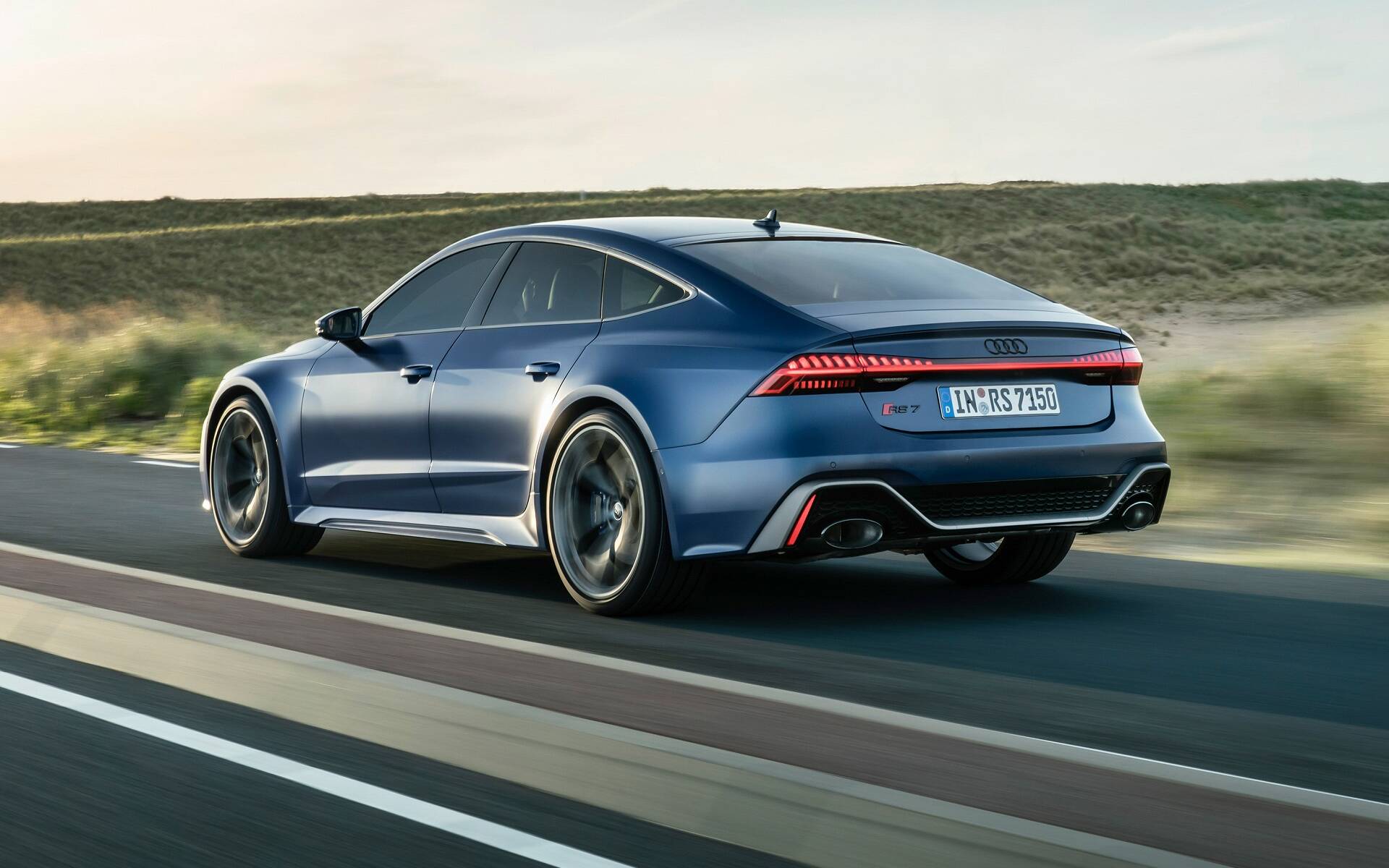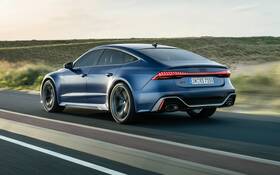2024 Audi RS6 Avant / RS7 Performance: More of Everything

| Strong points |
|
|---|---|
| Weak points |
|
St. Helena, California - Even though Audi is firmly committed to electrification, the company continues to develop its combustion-powered performance models. Doped up on steroids, the RS6 Avant and RS7 Sportback Performance are more powerful and more dynamic, and from the moment the engine is put to life, they assert their presence with a sound that is more evocative than ever. While the "classic" RS6 and RS7 output a healthy 590 horsepower, Performance models get 621 horsepower and 627 lb-ft of torque. To achieve this, Audi Sport engineers reprogrammed the 4.0-liter twin-turbo V8’s electronics and fitted larger turbochargers that boost pressure from 2.4 to 2.6 bar. The result is a 0 to 100 km/h sprint of 3.4 seconds, two-tenths slower than the models they are based on.
The engine sounds much louder in the cabin, that’s because engineers have removed eight kilos of soundproofing material so that the driver and passengers can enjoy the full experience of hard accelerations, especially when the Dynamic, RS1 or RS2 driving modes are selected. Performance versions also feature a visual animation when the Hot Start mode is activated.
- Also: Audi Q8 Freshens Up for 2024, to be Rebadged Later
- Also: 2025 Audi Q7 Gets a Nip and Tuck, Sprints Faster

Feeling the Pulse
On sunny California roads, Performance versions demonstrate state-of-the-art dynamic behaviour, with dry and wet handling superior to that of the traditional RS6 Avant and RS7 Sportback. The same goes for braking distances, which are shorter - minus 2 metres from 100 km/h compared with conventional models - in both wet and dry conditions.
To achieve this, engineers installed a lockable centre differential, lighter 22" Y-shaped 5-spoke alloy wheels and Continental SC7 tires. This wheel/tire combo reduces unsprung weight by 5 kg per wheel, which has a direct impact on cornering performance. As with the RS6 Avant and RS7 Sportback, the Performance versions are equipped with the full arsenal of driving modes, including RS1 and RS2, which can be set at the touch of a button on the steering wheel. Each mode can be calibrated in two or three levels of intensity, thus calibrating engine and chassis response according to the driver’s preferences. The quattro sport differential, capable of sending extra torque to the outside wheel when cornering, enables these Performance versions to follow the ideal trajectory with surgical precision. It is also still possible to opt for composite ceramic brakes instead of the usual steel disc brakes.

Just the Right Amount of Glitz
Performance versions are distinguished by specific matte gray/matte carbon exterior elements, such as the front lip, mirror caps, rocker panels, roof rack and diffuser. Three new colours are on the program, two of which - Dewsilver and Ascari Blue - are also available in matte finish (see pictures). Inside, Performance models are distinguished by the presence of blue elements, such as the RS logos.

Already dynamic and powerful, the RS6 Avant and RS7 Sportback become even more interesting with the addition of the Performance versions. In an interview I conducted a year ago with Oliver Hoffmann, Audi's head of technical development, he stated that although Audi was resolutely committed to electrification, combustion-powered models would continue to evolve to become more powerful and efficient. The new Performance versions of the RS6 Avant and RS7 Sportback, now available on the Canadian market, may well be the last variants of these models to be powered exclusively by internal combustion engines. They are a powerful demonstration of constant improvement. Made by enthusiasts, for enthusiasts!











